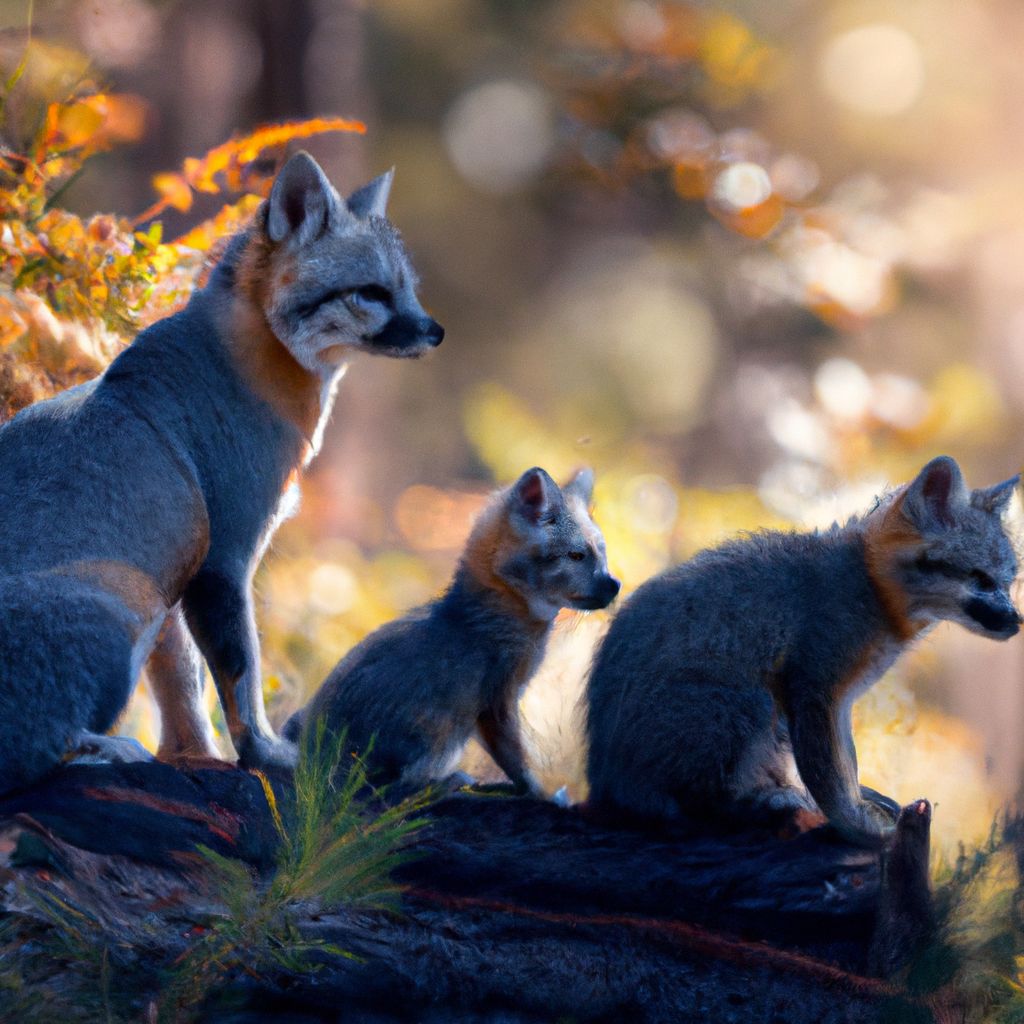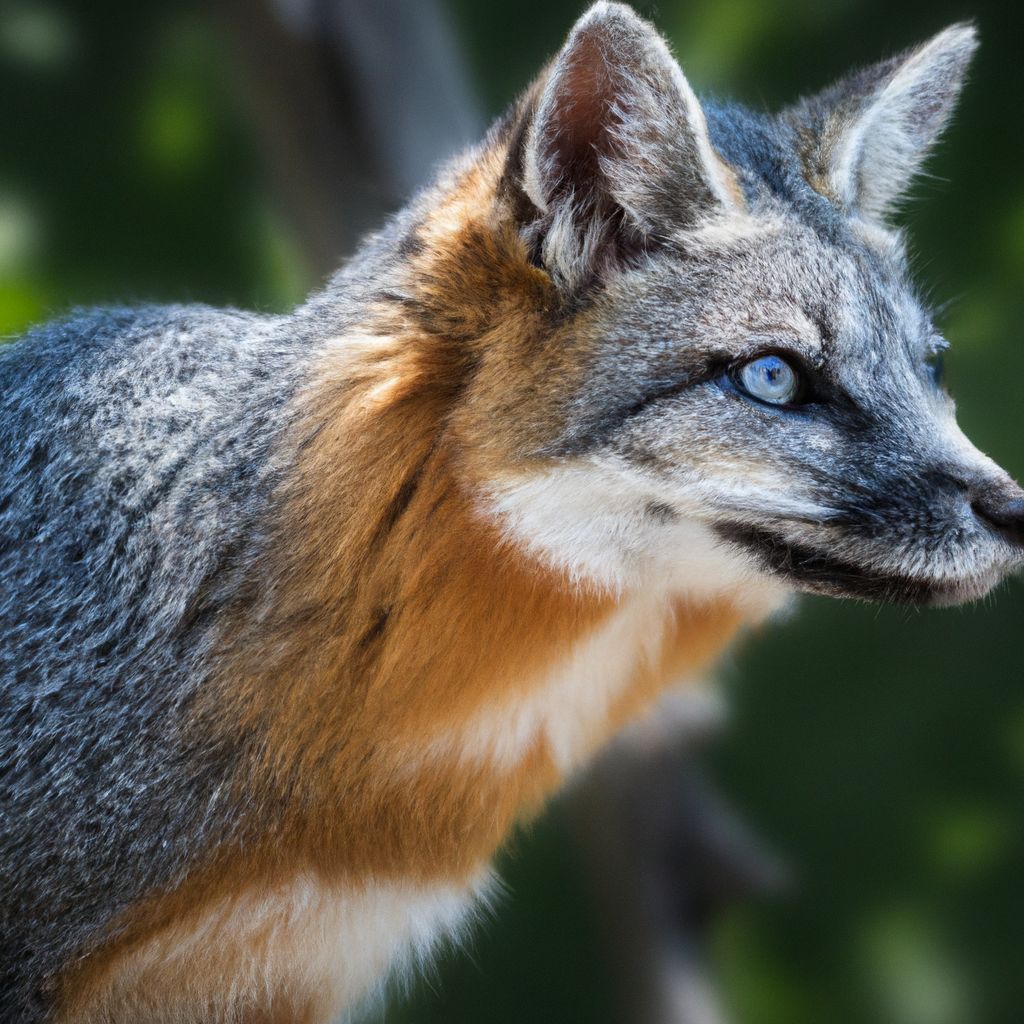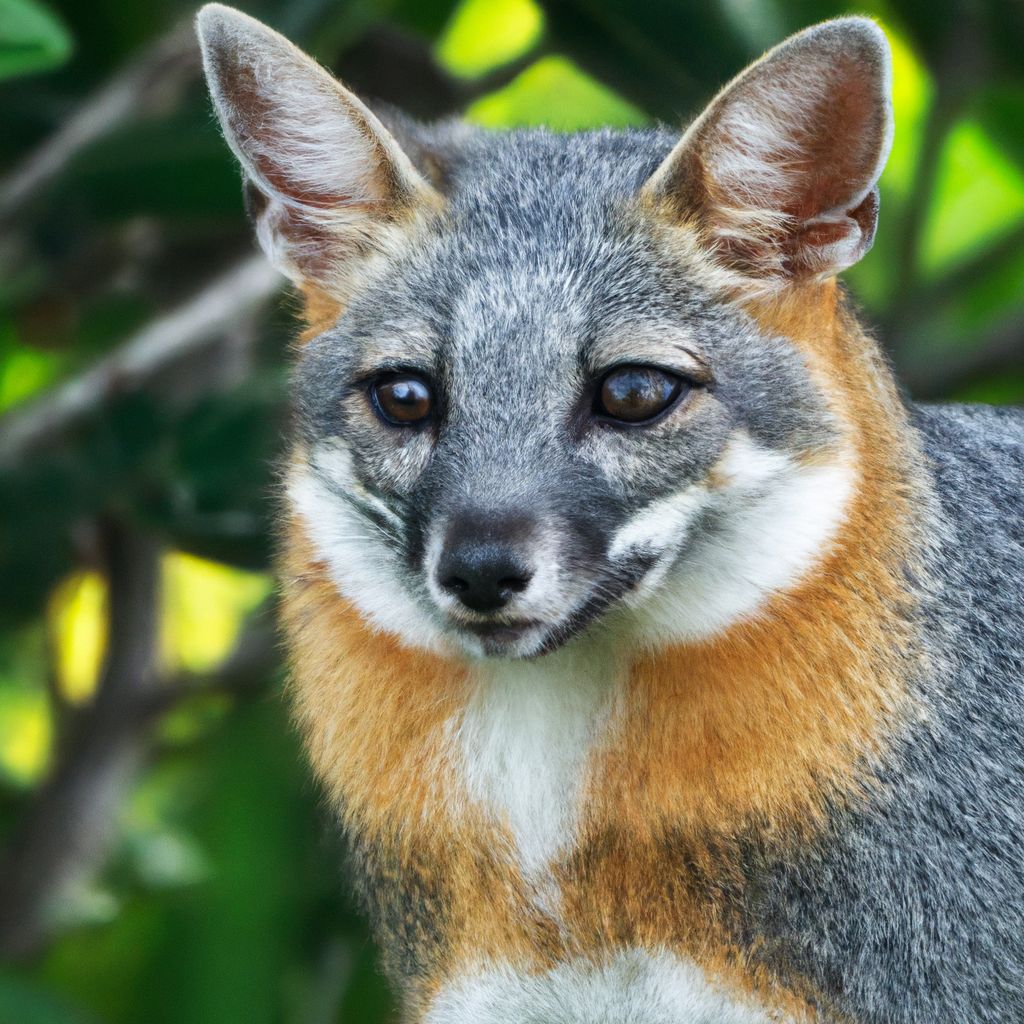The Gray Fox is a fascinating species that inhabits various regions of North and Central America. This article aims to provide an in-depth study of the Gray Fox, specifically focusing on its interaction with other species. By examining its physical characteristics, habitat and distribution, behavior and adaptations, and its interactions with prey species, other canids, avian species, and its impact on the ecosystem, we can gain valuable insights into the ecological significance of the Gray Fox. Furthermore, this article will discuss the conservation status of the Gray Fox population, the threats it faces, and the conservation efforts being made to protect this remarkable species. Through an exploration of its intricate relationships with other species, we can deepen our understanding of the Gray Fox’s role in maintaining a balanced and thriving ecosystem.
Contents
- 1 Key takeaway:
- 2 Behavior and Adaptations of the Gray Fox
- 3 The Gray Fox’s Interactions with Other Species
- 4 Conservation Status and Management
- 5 Frequently Asked Questions
- 5.1 What is the impact of habitat fragmentation on gray fox populations?
- 5.2 How does urbanization affect the interaction between gray foxes and other species?
- 5.3 What are some potential factors contributing to the decline of gray fox populations?
- 5.4 How do gray foxes interact with other canids like red foxes and coyotes?
- 5.5 What role does tree cover play in the coexistence of gray foxes and coyotes?
- 5.6 How do human actions impact the ability of gray foxes and other species to adapt and coexist?
Key takeaway:
- The Gray Fox has unique physical characteristics: It is recognized by its reddish-tinged fur and a black stripe along its back. Its ability to climb trees is an important adaptation.
- The Gray Fox is adaptable in its habitat and distribution: It is found throughout North America, including forests, deserts, and grasslands. Its ability to thrive in diverse environments contributes to its widespread distribution.
- The Gray Fox exhibits interesting behavior and adaptations: It is a skilled hunter and feed on a variety of prey. It is primarily nocturnal, using its keen senses of sight and hearing to navigate in the dark. The fox also exhibits social behaviors and lives in small family groups.
- The Gray Fox interacts with other species: It has complex interactions with prey species, effectively hunting small mammals and birds. It competes with other canids, such as coyotes, for resources. Additionally, it has relationships with avian species, often benefiting from their nests and eggs. Its overall impact on the ecosystem is significant.
- The Gray Fox faces threats to its population: Habitat loss, human encroachment, and road mortality pose major threats to the Gray Fox population. Conservation efforts are necessary to ensure the survival of this species.
Physical Characteristics
The Gray Fox possesses a variety of physical characteristics that define its unique appearance and abilities. As a medium-sized fox, it typically weighs between 7 and 13 pounds. Its fur is predominantly gray but also incorporates black, white, and reddish tones, allowing it to effectively blend into its surroundings. One distinguishing feature of the Gray Fox is its remarkable ability to climb trees, made possible by its specially adapted claws and flexible wrists. This enables it to evade predators and successfully capture its prey. Additionally, the Gray Fox exhibits a slender body with a bushy tail, which aids in maintaining balance and facilitating communication. Its pointed ears and long muzzle play a vital role in detecting sounds and scents. Familiarity with these physical characteristics is essential for accurately identifying and studying the Gray Fox in its natural habitat, as they significantly contribute to its survival and successful adaptation.
Habitat and Distribution
The habitat and distribution of the Gray Fox are influenced by climate, vegetation, and food availability. They can be primarily found in North and Central America, ranging from southern Canada to parts of South America.
The Gray Fox is highly adaptable and can thrive in various environments, including forests, woodlands, grasslands, deserts, and even urban and suburban areas.
Within their range, Gray Foxes inhabit regions with dense vegetation for hunting and nesting, as well as areas with a stable water source, such as rivers, streams, or marshes.
Population distribution of Gray Foxes varies within their range, with larger populations in North America compared to Central and South America. However, accurately determining population sizes and densities is challenging.
To spot Gray Foxes in their natural habitat, consider visiting wildlife reserves, national parks, or protected areas with diverse ecosystems. Viewing opportunities may be best during the early morning or late evening when they are most active. Remember to maintain a safe distance and observe quietly to avoid disrupting their natural behavior.
Behavior and Adaptations of the Gray Fox
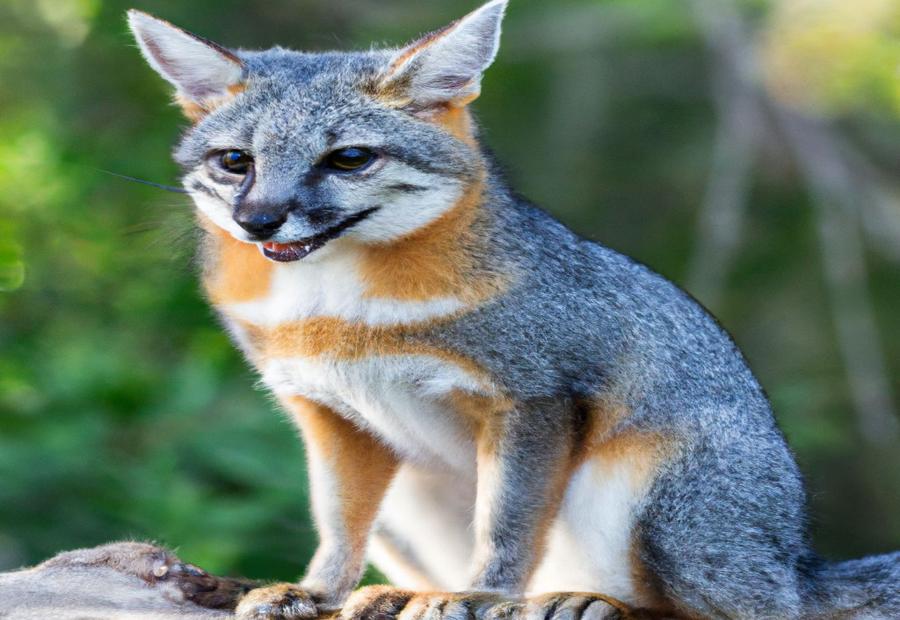
Photo Credits: Foxauthority.Com by Logan Anderson
The behavior and adaptations of the Gray Fox are as fascinating as they are crucial for its survival. Delving into its hunting and feeding habits, nocturnal behavior, and unique social structure, this section uncovers the secrets behind its remarkable ability to thrive in diverse ecosystems. From its cunning hunting techniques to its solitary yet interconnected social structure, get ready to embark on a captivating journey into the world of the enigmatic Gray Fox.
Hunting and Feeding Habits
The Gray Fox is an opportunistic hunter with diverse feeding habits. They prey on small mammals such as rabbits, squirrels, mice, and voles, along with birds, reptiles, amphibians, and invertebrates.
Gray Foxes utilize stalking as their primary hunting technique. They silently approach their prey and pounce for a successful capture. These foxes are skilled climbers and can climb trees to hunt or escape from predators, giving them an advantage over other canids.
They have a keen sense of hearing and excellent night vision, allowing them to locate prey in hidden or underground locations and hunt in low-light conditions.
Moreover, Gray Foxes display the habit of burying their food for storage when prey is scarce, showcasing their adaptive hunting and feeding habits.
This adaptability and resourcefulness as a predator help Gray Foxes survive in different environments and maintain balanced ecosystems.
Nocturnal Behavior
The Gray Fox demonstrates its nocturnal behavior, which allows it to thrive in its environment. It is primarily active at night, utilizing its exceptional hearing and vision during this time to navigate and detect prey. With its high concentration of rod cells in its eyes, the fox possesses excellent night vision.
Nocturnal behavior greatly aids the fox in its hunting strategy as it silently stalks prey, taking advantage of the cover and reduced visibility of the night. Thanks to its agility and speed, the fox is capable of capturing a variety of small mammals, birds, and insects.
Except during mating season, the fox is solitary, reducing the chances of encountering rivals or predators. It has adapted its senses to cope with darkness, relying heavily on its acute sense of smell to locate food and mark territory.
If you wish to observe the Gray Fox’s nocturnal behavior, consider participating in guided night hikes or wildlife photography tours. These experiences offer a unique opportunity to witness the captivating behavior of the fox under the cover of darkness.
Social Structure
The social structure of the gray fox is a key aspect to understanding their behavior and interactions with other species. It is complex and involves various elements such as hierarchical organization, group size, territoriality, cooperative behavior, and communication and bonding.
Hierarchical organization plays a significant role in the social structure of gray foxes. They have a dominant male and female breeding pair that leads the group and has priority access to resources.
Group size is another important aspect. Gray foxes typically live in small family groups consisting of the breeding pair and their offspring. These groups usually consist of four to six gray foxes.
Territoriality is also a characteristic of gray foxes’ social structure. They defend their territories from other groups. The size of their territory depends on the availability of food resources.
Cooperative behavior is observed within gray fox family groups. They work together to raise and care for their young. Older siblings play a role in teaching survival skills to the younger members.
Communication and bonding are crucial for maintaining social bonds within the gray fox community. They use vocalizations, body postures, and scent markings to communicate with each other.
Understanding the social structure of the gray fox is important for studying their behavior. Environmental factors and resource availability can influence their social organization to some extent. However, further research is still needed to fully comprehend the gray fox’s social structure in different habitats.
The Gray Fox’s Interactions with Other Species
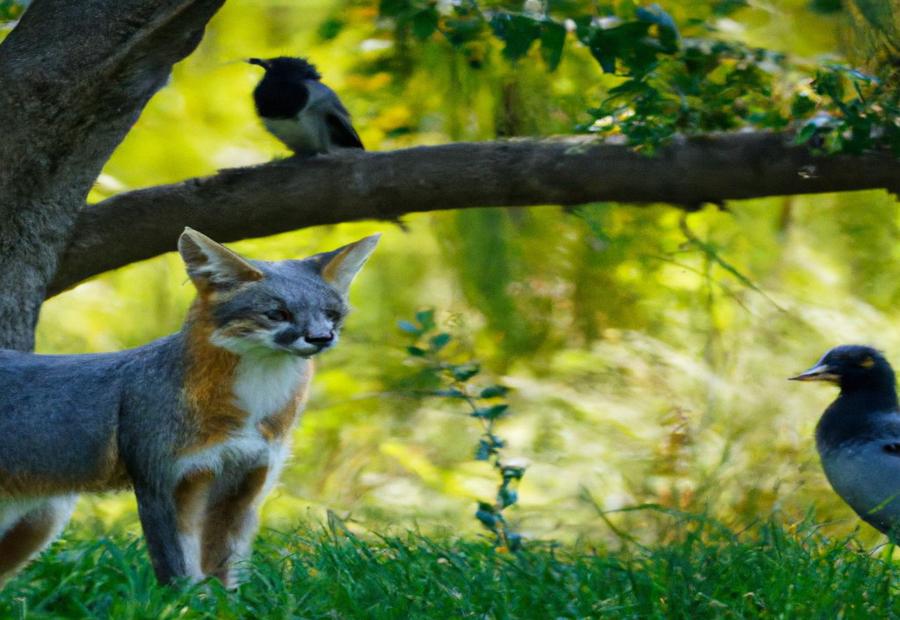
Photo Credits: Foxauthority.Com by Walter Mitchell
The Gray Fox, a fascinating creature, engages in a myriad of interactions with other species. From its interactions with prey species to its competition with other canids, its relationships with avian species, and even its impact on the ecosystem, we’ll explore the diverse web of connections the Gray Fox weaves. Get ready for a captivating journey into the intricate world of this enigmatic creature and the role it plays within its ecological community.
Interaction with Prey Species
Interaction with prey species is vital for the behavior and survival of the gray fox. The provided table showcases the different prey species that the gray fox interacts with, the type of interaction, and the impact on the population of gray foxes:
| Prey species | Type of interaction | Impact on gray fox population |
| Rabbits | Prey | Rabbits are a primary food source for gray foxes, constituting a significant portion of their diet. The availability of rabbits directly affects the abundance and survival of gray foxes. |
| Small rodents | Prey | Small rodents such as mice and rats are crucial prey for gray foxes. These prey species contribute to the overall energy and nutrition intake of the gray fox population. |
| Birds and eggs | Opportunistic prey | Gray foxes opportunistically prey on birds and their eggs. While not a primary food source, they can impact local bird populations in certain circumstances. |
| Insects | Supplemental prey | Insects like grasshoppers, beetles, and crickets serve as supplemental prey for gray foxes. Although not a significant part of their diet, insects can provide additional nourishment at certain times of the year. |
Understanding the interaction of the gray fox with prey species is crucial for studying its feeding habits, population dynamics, and conservation efforts. By analyzing the availability and impact of different prey species, researchers can gather insights into the health and sustainability of the gray fox population.
It is important to note that prey availability can fluctuate based on environmental factors, such as changes in habitat and prey population dynamics, when considering the interaction with prey species. Additionally, the hunting and foraging behaviors of the gray fox influence its ability to successfully hunt and feed on prey.
Studying the interaction of the gray fox with prey species provides valuable information for conservationists and wildlife managers in developing effective strategies to protect and conserve this species and its prey populations.
Competition with Other Canids
Competition with other canids is a crucial aspect of the gray fox’s interactions with other species. Gray foxes coexist in their habitat alongside coyotes and red foxes, and these canids engage in competition for food, water, and territory. Gray foxes have a varied diet that includes small mammals, birds, reptiles, and insects. They display exceptional hunting skills and are capable of capturing prey using their agility and stealth. However, when prey populations are limited, they may find themselves competing with other canids for food.
Territorial competition also plays a significant role in the interactions between gray foxes and other canids. Each species requires space to establish den sites and locate food sources. The territories of these canids can overlap, resulting in conflicts and competition for resources. The outcome of these interactions is dependent on the size and strength of the individuals involved. Despite coyotes and red foxes being larger and potentially more dominant, gray foxes possess their own unique advantages. They are skilled climbers and have the ability to seek refuge in higher branches or dens that other canids are unable to reach. This enables them to utilize vertical space and avoid direct confrontations with larger competitors.
The competition with other canids significantly impacts the distribution, behavior, and survival of gray foxes. Understanding these dynamics aids in conservation efforts and population management, ensuring the long-term coexistence of these canid species in their shared habitats.
Relationship with Avian Species
The gray fox has a complex relationship with avian species. Here are some key points:
1. Feeding behavior: Gray foxes have a diverse diet that includes various avian species. They may opportunistically prey on ground-nesting birds, eggs, and nestlings. However, they do not rely solely on avian species for their food.
2. Nesting and roosting sites: Gray foxes may use trees or rocky outcrops as den sites, which can affect avian species that also depend on these resources for nesting or roosting. However, the extent of competition for these sites is not well-documented.
3. Predation risk: Avian species face predation from gray foxes, especially when on the ground or during nesting periods. The risk of predation can influence the behavior and distribution of avian species, particularly in areas with a high density of gray foxes.
4. Ecosystem dynamics: The presence of gray foxes in an ecosystem can impact the population dynamics of avian species. Gray fox predation can help regulate bird populations and influence species interactions and community structure within the ecosystem.
5. Impact on bird conservation: Although gray foxes prey on avian species, they are not a significant threat to most bird populations. To prioritize bird conservation efforts, it is important to address issues such as habitat loss, invasive species, and other factors that have more substantial impacts on avian populations.
To maintain a healthy balance between gray foxes and avian species, it is crucial to promote habitat conservation and management practices. This includes creating diverse habitats, providing suitable nesting sites, and minimizing disturbances caused by humans.
Impact on Ecosystem
The gray fox has a significant impact on the ecosystem in a variety of ways. One way is through predation, as they hunt small mammals, birds, reptiles, and insects, which helps maintain the balance of the ecosystem.
Additionally, gray foxes unintentionally disperse seeds from the fruits and berries they eat, contributing to the regeneration of plant populations and supporting biodiversity.
They also play a role in habitat modification by creating dens in the ground or repurposing existing structures, providing shelter for themselves and other species such as small mammals, insects, and reptiles.
In addition, the gray fox influences relationships between different canid species as they compete for food and territory.
They can drive away red foxes or coyotes, impacting their population dynamics and interactions with other species.
Furthermore, they help control the spread of disease by scavenging carrion, removing potentially harmful animal carcasses from the environment and reducing the risk of transmission to other animals.
The impact of the gray fox on the ecosystem is complex and interconnected with various aspects of the natural environment.
Understanding these interactions is crucial for effective wildlife management and conservation efforts.
Conservation Status and Management
Exploring the threats that affect the Gray Fox population and the ongoing efforts to protect and preserve this magnificent species. From habitat loss to human encroachment, we’ll uncover the challenges faced by the Gray Fox. Join us as we delve into the latest conservation initiatives aimed at ensuring the survival and well-being of this remarkable creature. Get ready to learn about the delicate balance between humans and nature in the world of the Gray Fox.
Threats to Gray Fox Population
Threats to Gray Fox Population
The gray fox population faces threats that endanger their survival. These include habitat loss, human activities, predation, and diseases.
-
Habitat Loss: Urbanization, agriculture, and deforestation destroy and fragment the natural habitats of gray foxes, significantly threatening their population. When forests and grasslands are cleared for human activities, foxes lose their shelter and hunting grounds.
-
Human Activities: Gray foxes are threatened by road accidents and trapping caused by human activities. Vehicle collisions are a major cause of death among foxes, especially in areas where roads intersect their habitats. Trapping, whether intentional or unintentional, also impacts their population.
-
Predation: Coyotes and domestic dogs pose a threat to gray foxes. These larger predators compete for resources and prey on the foxes, leading to a reduction in population size.
-
Diseases: Gray foxes are vulnerable to diseases like canine distemper, rabies, and mange. Outbreaks of these diseases can devastate populations, particularly in areas with high infection rates.
To conserve the gray fox population, efforts should focus on protecting their habitats, mitigating human-wildlife conflicts, and implementing disease prevention and management strategies.
Fact: The gray fox population has declined by approximately 40% in recent decades due to these threats. Taking action to address and minimize these risks is crucial to protect this important species in our ecosystems.
Conservation Efforts
“Incorporating conservation efforts is crucial for protecting the gray fox population and preserving their natural habitat. To achieve this, we must safeguard forests, woodlands, and grasslands where the foxes live, ensuring that human activities like urbanization or agriculture do not destroy or fragment these areas.
By reducing human-wildlife conflict, through strategies such as using fencing, sound deterrents, and providing alternative food sources, we can prevent livestock depredation and minimize the foxes’ proximity to residential areas.
Additionally, controlling the spread of invasive species is important as they can harm the gray fox and its habitat. Monitoring and managing these species will prevent disruptions to local ecosystems and the fox’s food sources.
Moreover, raising awareness about the importance of gray fox conservation through education programs is crucial. This will help communities understand the fox’s role in the ecosystem and promote responsible actions to support conservation efforts.
Collaboration between researchers, conservation organizations, and government agencies is essential for effective gray fox conservation. Through the collection and analysis of data on population trends, habitat quality, and threats, we can develop appropriate management strategies and conservation plans.
By implementing these conservation efforts, we can ensure the long-term survival and well-being of the gray fox population, preserving their role in the ecosystem and their natural habitat for future generations.”
Frequently Asked Questions
What is the impact of habitat fragmentation on gray fox populations?
Habitat fragmentation can have a negative impact on gray fox populations. The study suggests that gray foxes could be at risk in rural areas with little tree cover. Preserving tree cover and enhancing habitat connectivity can help mitigate the effects of habitat fragmentation and support gray fox populations.
How does urbanization affect the interaction between gray foxes and other species?
Urbanization can disrupt natural habitats and food sources, which can impact the distribution and interaction of species like gray foxes. The study found that gray foxes and coyotes are more likely to coexist in areas with high housing density and low forest cover, such as suburbs. However, in rural areas, gray foxes were less likely to be seen with coyotes and preferred sites with increased tree cover.
What are some potential factors contributing to the decline of gray fox populations?
The study identified several potential factors contributing to the decline of gray fox populations. These include competitive interactions with other species, such as exploitative competition with red foxes and interference competition with coyotes. Additionally, anthropogenic disturbance, habitat fragmentation, and trophic downgrading due to human activities may also contribute to the decline of gray foxes.
How do gray foxes interact with other canids like red foxes and coyotes?
Gray foxes have different interactions with other canids. The study found exploitative competition between gray foxes and red foxes, indicating competition for resources. On the other hand, gray foxes exhibited spatial and temporal avoidance of coyotes, suggesting fear-mediated resource restriction and intraguild killing. Overall, the interactions between gray foxes and other canids can have implications for their population dynamics.
What role does tree cover play in the coexistence of gray foxes and coyotes?
Tree cover plays a crucial role in the coexistence of gray foxes and coyotes. Gray foxes were more likely to inhabit areas with increased tree cover, potentially to avoid aggressive interactions with coyotes. Gray foxes have the ability to climb trees, which may provide them with a protective advantage. Preserving and enhancing tree cover in rural areas can benefit gray fox populations and help them coexist with coyotes.
How do human actions impact the ability of gray foxes and other species to adapt and coexist?
Human actions can greatly impact the ability of gray foxes and other species to adapt and coexist. Habitat fragmentation and anthropogenic disturbance can disrupt natural habitats and food sources, affecting species distribution and interaction. Preserving green spaces, reducing habitat fragmentation, and enhancing habitat connectivity are important actions that can support the adaptability and coexistence of gray foxes and other species.
